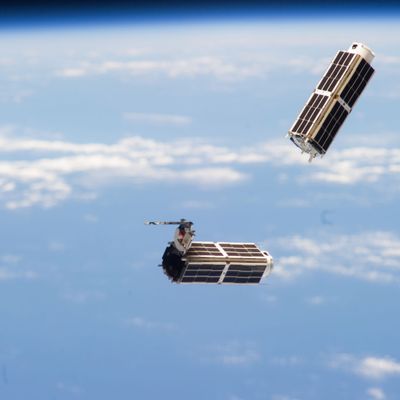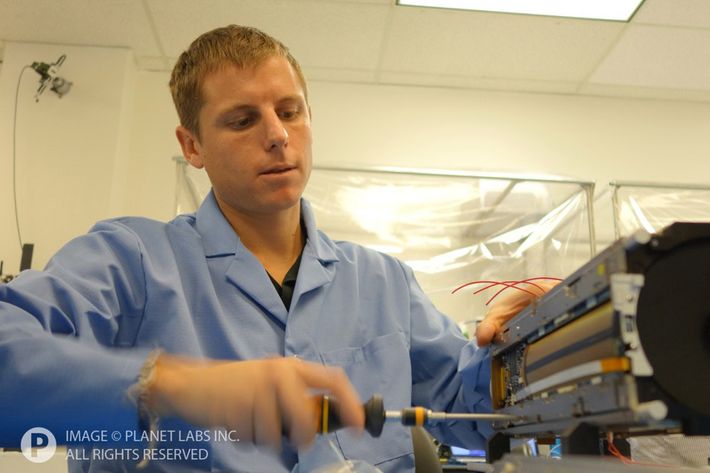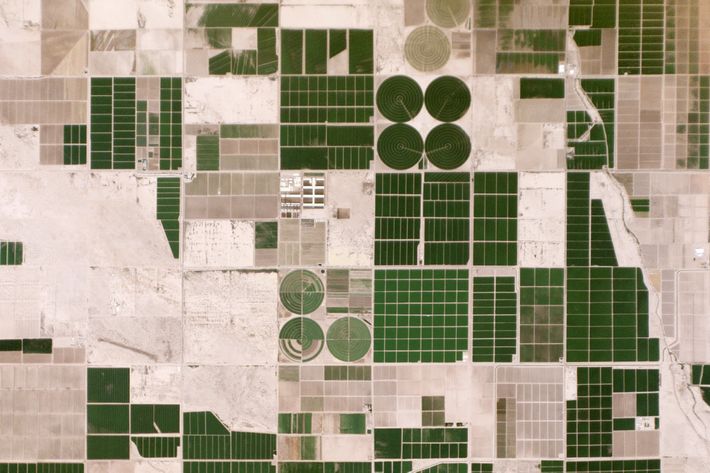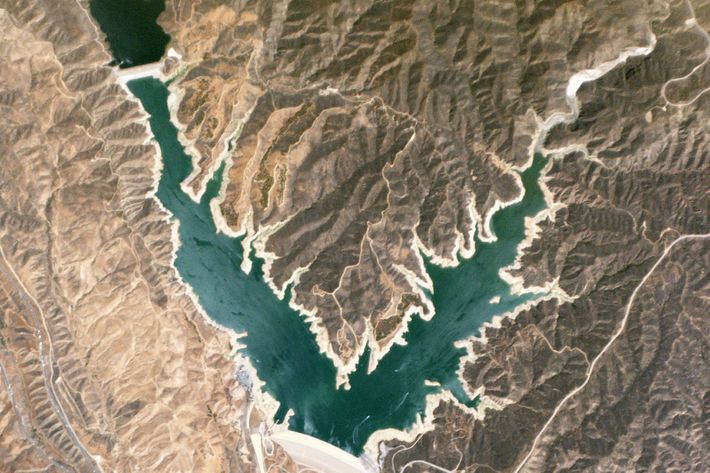
The email inbox of a tech writer is a Macy’s Thanksgiving Day Parade of garbage — thousands of pitches for ill-conceived, duplicative, morally bankrupt, or otherwise useless companies that, 19 times out of 20, have no larger bearing on the world. A shovel-sharing start-up. The 347th disappearing-photo-sharing app. A Kickstarter to fund Google Glass for cats. Recently, with things like Yo and Push for Pizza actually taking off, the tech industry has seemed almost competitively dumb, with companies falling over themselves to seek attention by appealing to the lowest common denominator.
And then, once in a long while, you come across something that reminds you that, yes, Silicon Valley is still doing some very worthwhile things.
That happened to me yesterday, with a start-up called Planet Labs.
Planet Labs is based in San Francisco. Here is its website. It is a company that makes small, cheap satellites and puts them into outer space to take high-resolution pictures of the earth. It was started in 2010 by a group of NASA engineers who got frustrated with how long government-funded space projects took to complete, and decided to strike out on their own. It has raised something like $65 million from some of the same investors who backed Facebook, Twitter, Tesla, and other popular Silicon Valley companies. If you haven’t heard of them, it’s because they’ve been avoiding most interviews with the media until they’re further along in the development process.
I went to Planet Labs’ office yesterday, after its PR rep invited me in for a tour. (The rep said he wasn’t looking for me to write a story; he just wanted to show me the place. “No agenda,” he wrote. I didn’t believe him, but agreed anyway.) Planet Labs’ president and co-founder, Robbie Schingler, and its director of community engagement, Shannon Spanhake, led me on a tour through the office. It’s a smallish space with about 70 employees on the first floor of a nondescript building that houses several other start-ups, and looks at first blush like every other tech office in San Francisco. There’s a fridge full of fancy sodas and cans of sparkling yerba maté. A drum set tucked in a corner. A whiteboard with math equations on it. Rows of focused coders, some sitting on yoga balls, some parked at standing desks, all typing into their terminals. It smelled vaguely of Febreze.
Unlike most start-ups, Planet Labs’ launch schedule is literal. They’ve put 71 satellites into orbit in the last 16 months, and are currently on the 12th build of their mini-satellite. (For purposes of comparison, most NASA satellites cost hundreds of millions of dollars, and take up to a decade to build and launch.) Planet Labs satellites, nicknamed “doves,” are smaller than a loaf of bread, and are assembled using mostly off-the-shelf parts, some from cell phone and tablet manufacturers. As a result, they’re very cheap to make — though the company wouldn’t say how much each one costs to build, it’s been estimated by outsiders that they’re 95 percent cheaper than a normal satellite.
These satellites do what lots of satellites do — take photos of the Earth’s surface, and transmit them back to base stations — but the difference is that there are dozens of them. Eventually, Planet Labs will have hundreds of satellites orbiting simultaneously, capturing every inch of the Earth’s surface to create a comprehensive picture of what the planet looks like every 24 hours. (Again, for purposes of comparison, most existing satellite images — including the ones used by Google Maps — are patched together from multiple satellite sources, and capture images of the same spot every few weeks or months.)

Chester Gillmore, the company’s director of manufacturing operations, asks me to put on a protective lab coat and takes me through the back room, where the satellites are made. I cannot emphasize this point enough: Planet Labs makes actual things, things you can hold in your hand, things that go to outer space. For a guy who’s used to being pitched on beta-version apps, crowd-funding projects, and incomprehensible cloud platforms, the idea of a start-up making something as tangible as a satellite makes me deliriously giddy.
Planet Labs has fun, by the looks of things. (Tucked just off their manufacturing lab is a nap room with Star Wars sheets on the beds. About half the company is going to Burning Man next week, a data point that should not be used against it.) But its mission is very serious. They want to use the images their satellites capture to create a huge, searchable database that can be used to track changes to the Earth in real time. Some of the customers who will eventually purchase this data are conservation groups who want to see the effects of climate change on the Earth; others are insurance companies who want to track the well-being of properties they cover; others could include government agencies, hedge funds, transportation companies, and NASA itself.
But right now, Planet Labs is focusing on getting as many of these satellites up as possible. The way they do this is by paying anyone who’s launching rockets — which, right now, means mostly the U.S., Japan, and Russia — to let them park their devices in a side compartment on the way up, and releasing them into space once they’ve reached orbiting altitude. In February, they deployed a group of 28 satellites from the International Space Station.
Schingler shows me some of the photos these satellites take. Thanks to some auto-stabilizing and focusing technology I don’t really understand, they’re very good — much clearer and more detailed than the ones you find on Google Maps. And you can see how having lots of them coming in every day could be useful. Recently, one of the company’s satellites was able to capture images of a forest fire in California and alert the authorities ten minutes before it had been reported on the news. Here are a few others they’ve taken:


I have no idea if Planet Labs will succeed as a business. (One of its competitors, Skybox Imaging, was bought by Google in June for $500 million, so you have to think its chances are decent.) But I hope it does. Their vision is ambitious but manageable: They’re basically taking a fast, iterative softwarelike approach to the traditionally lumbering process of putting satellites into orbit, using materials and a design process that allows them to do it for much less money than the traditional methods. It won’t save millions of lives, but it’s cool, novel, and, yes, even a little disruptive.
I know my view of the tech world is biased toward fluff and B.S.— as a guy who writes about overwhelmingly consumer-oriented start-ups, many of the industry’s boring but important projects stay cloistered from my view. But it was refreshing to see, in the course of an hour-long visit with a little satellite company, that the higher, better ambitions of Silicon Valley are still alive and well. Even if they’re sometimes hard to find.





























